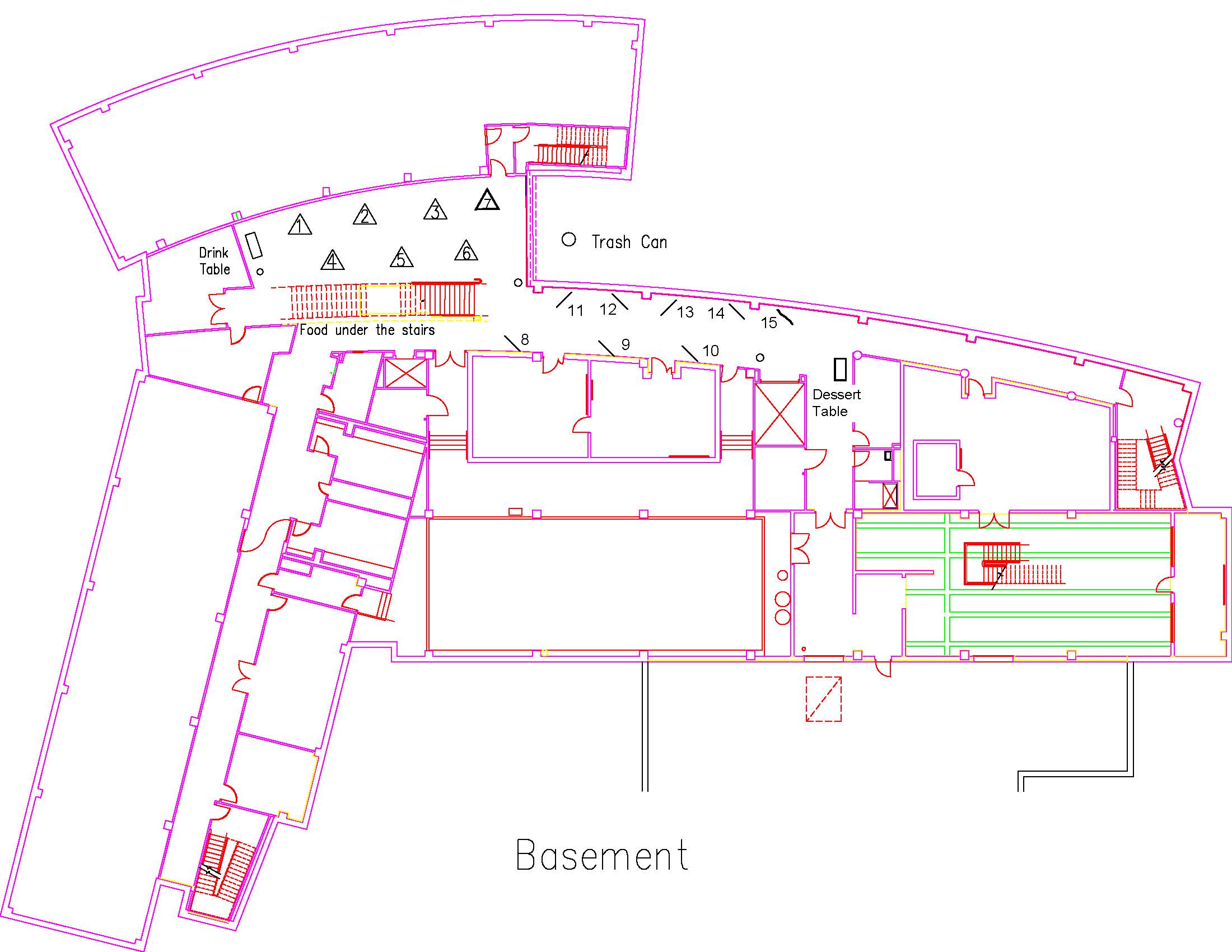BIOL2019FIGG35591 BIOL
The Impact of Early Developmental Stress on Inflammation in Adulthood
Type: Undergraduate
Author(s):
John Figg
Biology
Kelly Brice
Psychology
Chris Hagen
Biology
Claire Munster
Biology
Caitlyn Vilas
Biology
Advisor(s):
Michael Chumley
Biology
Gary Boehm
Psychology
Location: Session: 1; Basement; Table Number: 10

(Presentation is private)Stress has been linked to altering acute and long-term inflammatory responses. Stress has been shown to activate inflammatory responses, specifically microglial activation in the brain. While acute inflammation is one of the first responses to fighting disease and infection, prolonged inflammation has been associated with neurogenerative disease such as Alzheimer’s disease. Stress at critical periods of development, known as early life stress (ELS) has been linked to chronic dysregulation of the hypothalamic-pituitary adrenal (HPA) axis, depression and alterations to microglial cells. The goal of this study is to investigate the effect of stress in mice during early development through maternal stress during pregnancy and the impact on neuroinflammation in adult offspring. In utero, offspring are vulnerable to the harmful effects of pro-inflammatory cytokines due to stress experienced by adult mice, following an ELS timeline. Three conditions were utilized: (1) mice undergoing stress during the entire pre-natal period and with the early post-natal period, (2) mice undergoing stress during the early postnatal period, and (3) mice undergoing no additional stress at any point. For mice in the combination-stress condition, there was an immunosuppressive effect through downregulation of pro-inflammatory cytokines. These data support existing publications that indicate an immunosuppressive role of prenatal stress, leaving the host less protected against chronic disease.
BIOL2019FINCH58955 BIOL
Investigating sex-based differences in pathogen resistance and immune responses in the fathead minnow (Pimephales promelas)
Type: Undergraduate
Author(s):
Miranda Finch
Biology
Lynsey Malin
Biology
Leah Thornton Hampton
Biology
Advisor(s):
Marlo Jeffries
Biology
Location: Session: 1; 1st Floor; Table Number: 3

(Presentation is private)Males and females differ with regard to their immune response to a pathogen. Previous studies have observed males having reduced pathogen resistance. This suggests that they may be responding to pathogens differently. However, few studies have compared male and female immune responses following pathogen exposure. The purpose of this study was to examine sex-based differences in pathogen resistance and immune responses following exposure to a pathogen in adult fathead minnows (Pimephales promelas). To accomplish this, fish were bacterially infected with Yersinia ruckeri and the immune system’s ability to respond was monitored. Additionally, genes that are known to turn on during the immune response initiation were measured quantitatively providing insight into the molecular effect in minnows. At the whole organism level, male fish were less able to survive pathogen infection relative to female fish. At the tissue level, both male and female pathogen injected fish had decreased hematocrit percentages compared to the fish injected with a saline solution but did not differ from each other. At the molecular level, increased gene expression of interleukin 1β was seen in pathogen-injected males compared to pathogen-injected females and both sham-injected sexes indicating that pathogen-injected males mounted a larger inflammatory response at the molecular level. Taken together, this evidence suggests that the increased mortality observed among males earlier in the exposure to the pathogen may be due to the upregulated inflammatory response rather than the effects of the pathogen itself.
BIOL2019JORDAN10583 BIOL
Investigating the Role of Glymphatic Clearance of Amyloid Beta Through Exercise in C57BL/6J Mice
Type: Undergraduate
Author(s):
Rachel Jordan
Biology
Chris Hagen
Biology
Sofia Lopez
Biology
Julia Peterman
Psychology
Jordan White
Psychology
Advisor(s):
Michael Chumley
Biology
Gary Boehm
Psychology
Location: Session: 1; 1st Floor; Table Number: 7

View PresentationAlzheimer’s disease (AD) is a very prevalent neurodegenerative disorder and is the 6th leading cause of death in the United States. Alzheimer’s disease (AD) is characterized by widely distributed amyloid plaques and neurofibrillary tangles, and is clinically associated with a progressive decline in memory and other cognitive functions. The major protein component of neuritic plaques is amyloid beta peptide. Several pieces of evidence have indicated that amyloid beta accumulates to form oligomeric states in the AD brain and cause the cognitive dysfunction commonly seen in patients. While a decrease in cognitive function is considered a hallmark of the disease, AD patients also exhibit decreased motor abilities and difficulties learning new motor tasks. Our lab’s previous investigations found voluntary running to decreased amyloid beta burden in C57/BL6 mice. The present experiment seeks to further explore the mechanism through which exercise induced amyloid beta clearance occurs. Previous studies have pointed to the function of the glymphatic system in the clearance of amyloid beta. The level and distribution of aquaporin 4 (AQP4) in the vascular endfeet of astrocytes is crucial to the normal function of the glymphatic system. Our experiment sought to determine a more detailed analysis of the role of AQP4 in the glymphatic clearance of amyloid beta. Using TGN-020, a selective AQP4 antagonist, we hope to further determine the importance of glymphatic clearance of amyloid beta in C57/BL6 mice through exercise. We hypothesize that mice receiving intraperitoneal TGN injections, thus blocking the function of AQP4, will experience decreased glymphatic clearance of amyloid beta. Understanding the process of amyoid beta clearance can aid in treatments for both the pathological and clinical affects associated with AD.
BIOL2019LOSEFSKY29412 BIOL
The role of ClpX and ClpP in antibiotic resistance in Bacillus antracis
Type: Undergraduate
Author(s):
Quinn Losefsky
Biology
Advisor(s):
Shauna McGillivray
Biology
Location: Session: 1; 2nd Floor; Table Number: 4

View PresentationBacillus anthracis is a Gram-positive bacterium that causes anthrax in humans. It is a significant microorganism in that many proteins important to virulence or pathogenesis are highly conserved in many other pathogenic bacteria. Our lab has previously identified the protein ClpX in Bacillus anthracis as metabolically significant in antibiotic resistance. Specifically, B. anthracis lacking the ClpX gene (ΔClpX) are significantly more susceptible to antibiotics that target the bacterial cell wall such as penicillin than the wild type. ClpX has multiple functions; primarily it interacts with ClpP to form a proteolytic complex that degrades dysfunctional or obsolete proteins. ClpX also has an independent chaperone function, moving proteins around the cell. This project has focused on determining if the pathway of decreased antibiotic resistance in mutant B. anthracis is dependent on ClpX interactions with ClpP, or if ClpX can function independently. To test this, a point mutation (I265E) was made in the ClpX gene at the site that has been previously identified as the site of interaction between ClpX and ClpP in Staphylococcus aureus. The ClpX genes in B. anthracis and S. aureus exhibit a high degree of conservation particularly in this region, and it is expected that this site will also be critical for ClpX and ClpP interaction in B. anthracis. The mutated ClpX gene (I265E) has been confirmed with sequencing and has been transformed as an inducible expression plasmit into the ΔClpX B. anthracis strain. The next step is to perfom growth assays in antibiotics such as penicillin to ascertain if the mutated expression vector can restore antibiotic resistance to ΔClpX.
BIOL2019MOROTECOSTAS54682 BIOL
The Effect of BRCA1 Activation on Protein Structure and Function
Type: Undergraduate
Author(s):
Brian Morote-Costas
Chemistry & Biochemistry
Advisor(s):
Mikaela Stewart
Biology
Location: Session: 1; 3rd Floor; Table Number: 3

View PresentationThe proper function of the Breast Cancer susceptibility gene 1 (BRCA1) and its subsequent protein in the human body is vital to healthy individuals. The malfunction of BRCA1 due to a mutation is associated with an increased risk of breast or ovarian cancer of up to 80%. The key to understanding whether a mutation in BRCA1 will lead to higher risk of cancer is its location. Many of its interactions with other proteins take place in the central region of BRCA1. Currently, little is known about how mutations located in this region affect BRCA1 structure and function. The central region is where BRCA1 interacts with another tumor suppressor called PALB2 to perform DNA repair. The central region site studied in this project can be activated as a response to DNA damage, influencing BRCA1 and PALB2 interaction to generate a damage repair response. We show how activation of BRCA1 affects its structure and function on the molecular level. The accomplish this we created three mutations in the central region that mimic activation of BRCA1 to identify possible significant changes in protein-protein interactions using biochemistry and structural biology techniques like Isothermal titration calorimetry and circular dichroism.
BIOL2019NAGEL36745 BIOL
Quantifying Synapses in a 5xFAD Mouse Model Using Immunolabeling and Tissue Clearing Techniques
Type: Undergraduate
Author(s):
Gabrielle Frediani
Biology
Kelly Brice
Psychology
Christopher Hagen
Biology
Briar Hill
Psychology
Sarah Nagel
Biology
Filza Qureshi
Psychology
Gabrielle Salinas
Psychology
Advisor(s):
Michael Chumley
Biology
Gary Boehm
Psychology
Location: Session: 2; Basement; Table Number: 4

View PresentationAlzheimer’s disease (AD) is a neurodegenerative disease resulting in dementia and memory impairment in patients. Research is immensely important as there are currently no treatments available to slow, prevent, or cure the damage inflicted upon individuals. The brain dysfunction in AD is marked by an increase in amyloid beta (Aβ), the protein responsible for plaque deposition in the brain. The severity of the cognitive deficits positively correlates with the load of Aβ. Prior research in animal models has pointed to Aβ causing synaptic disruption. A synapse is associated with information transfer inside the brain. Neuroscientists are trying to determine if the synapse disruption caused by Aβ leads to the cognitive dysfunction seen in AD. However, it is difficult it is to visualize individual neurons inside the hippocampus. In the present study, our aim was to understand the effect that Aβ has on synapses using an immunolabeling and tissue clearing technique in an AD transgenic mouse model. The 5xFAD mouse model utilized in this study rapidly develops Aβ pathology. This model mimics the pathophysiology of AD in humans. The mouse model used was also knock-in transgenic for Green Fluorescent Protein (GFP) on mature neurons. Using immunolabeling, GFP was tagged with antibodies, thus making neurons visible under the microscope. Antibodies were also used for Aβ in order to visualize the amount of Aβ protein and its location. Images of neurons were obtained in both FAD+/GFP+ and FAD-/GFP+ mice using a conventional staining method and a tissue clearing technique. We expected the tissue clearing technique, which clears lipids from the brain, to result in enhanced visualization of neurons but this was not the case. To quantify synapses, dendritic spines were counted on individual neurons in both groups of mice. Our results showed that Aβ accumulation in FAD+ mice correlates with a decreased number of dendritic spines signifying a decrease in synaptic density.
BIOL2019NAKHLEH63292 BIOL
Oxidative Stress as a Target for Alzheimer's Disease Therapeutics
Type: Undergraduate
Author(s):
Lauren Nakhleh
Biology
Paige Braden
Biology
Chumley Michael
Biology
Advisor(s):
Michael Chumley
Biology
Location: Session: 1; Basement; Table Number: 8

View PresentationAlzheimer’s Disease (AD) is a progressive neurodegenerative disorder that is currently ranked as the sixth leading cause of death in the United States. Those affected by the disease experience symptoms including but not limited to mental decline, memory loss, confusion, difficulty with language, and behavioral and mood changes. One of the hallmarks of AD is inflammation that occurs both centrally in the brain and in the periphery. While inflammation is the natural response to activation of our immune system and is critical for our survival, neuroinflammation is heavily associated with AD pathology. Two main cellular mediators involved with the inflammatory response are members of the glial cell family, microglial cells and astrocytes. When chronic inflammation is uncontrolled, it can lead to harmful cell and tissue damage. The continuous presence of damaged neurons results in the constant activation of microglia and astrocytes. This generates a neuroinflammatory environment which is thought to promote neurodegeneration. Another process commonly up regulated in the brains of aging individuals is that of oxidative stress, which plays a major role in age-related neurodegeneration and cognitive decline. The process can occur due to dysfunction of the antioxidant system, causing the accumulation of reactive oxygen species (ROS) in the brain. One of the primary biological markers of AD is the aggregation of Amyloid beta (Abeta). Abeta itself has been shown to act as a pro-inflammatory agent, promoting the activation of many inflammatory components. The accumulation of Abeta aggregates is thought to be exacerbated by essential biometal ions such as zinc and copper. Dr. Kayla Green’s lab in the TCU Chemistry Department has successfully created compounds that can simultaneously chelate metal ions and act as a powerful antioxidant. They have developed a family of compounds all consisting of N-heterocyclic amines that in turn, have the capacity to perform radical scavenging and metal ion capture. For the experimental design, BV2 neuronal cells were treated with either H202 or LPS for 16 hours. Following treatment, MTT assays were performed to measure cell viability. Once a treatment concentration was discovered that significantly decreased cell viability, varying concentrations of the N-heterocyclic amine were added to test for a recovery in overall cell viability.
BIOL2019NETTELBLAD39971 BIOL
Exploring the Effects of Early Life Stage Nitrate Exposure on Sexual Development and Adult Reproduction
Type: Undergraduate
Author(s):
Hannah Nettelblad
Biology
Caroline Wade
Biology
Advisor(s):
Marlo Jeffries
Biology
Location: Session: 2; Basement; Table Number: 11

(Presentation is private)Exploring the Effects of Early Life Stage Nitrate Exposure on Sexual Development and Adult Reproduction
Nitrate is a ubiquitous environmental contaminant that enters aquatic ecosystems as runoff from agricultural fertilizers, human and animal waste, and industrial processes. Previous animal studies indicate that at sublethal concentrations, nitrate acts as an anti-androgen in adult male vertebrates. However, a recent study using developing fathead minnows (Pimephales promelas) found that exposure to nitrate was correlated with increased androgen concentrations. This study sought to reconcile these conflicting results by exploring the impacts of environmentally realistic, early life stage nitrate exposure on male sexual development and adult reproduction. The main objective of this study was to identify the potential endocrine disrupting effects of nitrate across multiple levels of biological organization in male fathead minnows. Larvae less than 1 day post hatch were divided into three groups: 1) control, 2) low nitrate (50 mg/L NO3), 3) high nitrate (100 mg/L NO3) and exposed for 35 days. Gonadal gene expression of sex-steroid related genes was assessed in a subset of fish immediately following exposure. The remaining fish in each exposure group were raised in clean water until sexual maturity (115 dph) and then subjected to a 21-day breeding study, after which morphological measurements and male secondary sex characteristics were assessed. Gene expression analysis revealed that male fish in the high nitrate group had significantly decreased expression of a key enzyme in the sex steroid synthesis pathway than that of the control males. Breeding pairs in the high nitrate group also had a significant reduction in average clutch size. However, when these results are taken in conjunction with the analyses of the other target genes, breeding study endpoints, and morphological measurements, the exact effects of nitrate on the processes of sexual development and adult reproduction remain unclear.
BIOL2019NGAN63450 BIOL
Effect of Sex Hormones on Endothelial Vasculature in Women on Contraceptives and Men
Type: Undergraduate
Author(s):
Katherine Ngan
Biology
Michelle White
Biology
Advisor(s):
Dennis Cheek
Biology
Lynnette Howington
Biology
Location: Session: 2; 3rd Floor; Table Number: 6

(Presentation is private)Introduction: The purpose of this research was to determine differences in the effects of the sex hormone estrogen between the two genders on the endothelial function in vivo. Method: There was a total of forty-six college students from a liberal college in the South recruited. The forty-six students were twenty males and twenty-six females, who were divided into three groups: 20 males, 8 females (not taking any form of birth control) and 13 females (taking oral contraceptives). The participants were invited to complete a TCU approved IRB consent form and medical history questionnaire. Upon completion, the participants provided passive drool saliva for biomarker and sex hormone measurement and FMD for brachial artery flow and shear stress measurements. Results: Findings reveals that the mean age for males was 27.81 years and the mean age for females was 24.81 years. This data was found to be not significant (p = 0.0586). The BMI for males was 26.3 ± 3.59 kg/m2 and the BMI for females was 22.8 ± 2.36 kg/m2, found to be significant (p = 0.0003). 17-beta estradiol level was measured during follicular phase. There was no significant difference between men, women, and women on birth control. However, there was significant difference between male and female regarding nitrate production during the follicular phase (p = 0.0461). When comparing the post flow shear rate between women on birth control and women not on birth control, there was an increase in the shear velocity. Even though there was no significant change in sheer rate and FMD in the women on birth control, a trend toward an increase of both measures was noticed. Conclusion: There was found to be no significant difference in the effects of estrogen between men and women. Further research should be conducted to further specify the differences between women on contraceptives and men.
BIOL2019NIEBUHR1960 BIOL
A new community partnership for advancing Adolescent and Young Adults (AYA) cancer programs
Type: Undergraduate
Author(s):
Brian Niebuhr
Biology
Sophia Cosmich
Biology
Phat Do
Biology
Sarah Nagel
Biology
Caroline Wade
Biology
Advisor(s):
Matt Chumchal
Biology
Location: Session: 1; Basement; Table Number: 2

View PresentationIn partnership with UT Southwestern Moncrief Cancer Institute (MCI), the FWAYA Oncology Coalition, and TCU Pre-Health, our dedicated group of senior students at Texas Christian University aim to organize an awareness week for Adolescents and Young Adults (AYA) with cancer during the national AYA Cancer awareness week (3/31-4/6) of spring 2019 to reach students on campus. The Moncrief Cancer Institute has a leading AYA cancer program, offering individualized treatment, support, and therapy at no cost for patients who have been diagnosed with cancer. AYA oncology refers to the care and research focused on adolescents and young adults diagnosed with cancer, specifically those between the age of 15 to 39 years old. Every year 80,000 AYA’s are diagnosed with cancer in the U.S, and 600 of these patients are living in and around Tarrant County. The goal of our project is two-fold. First, we seek to raise awareness for programs and resources available to AYA patients with cancer through a campus campaign. As many members of the Texas Christian University identify between the ages of 15 and 39, we believe this cause is pertinent to TCU’s population. Second, we seek to connect the TCU community with events hosted in DFW by UT Southwestern Moncrief Cancer Institute and the FWAYA Oncology Coalition. TCU AYA Cancer Week 2019 is an Experiential
Projects that Impact the Community (EPIC) Grant project.